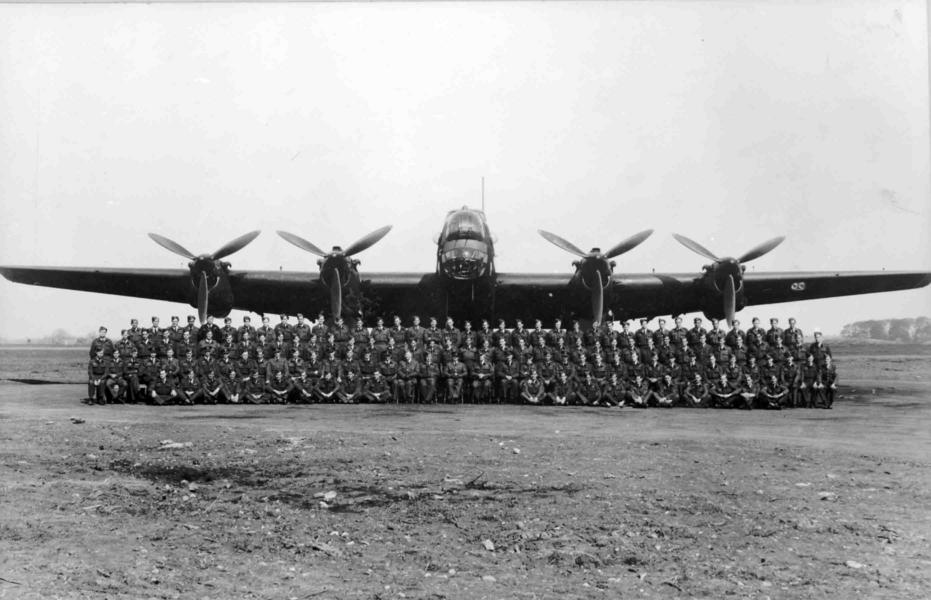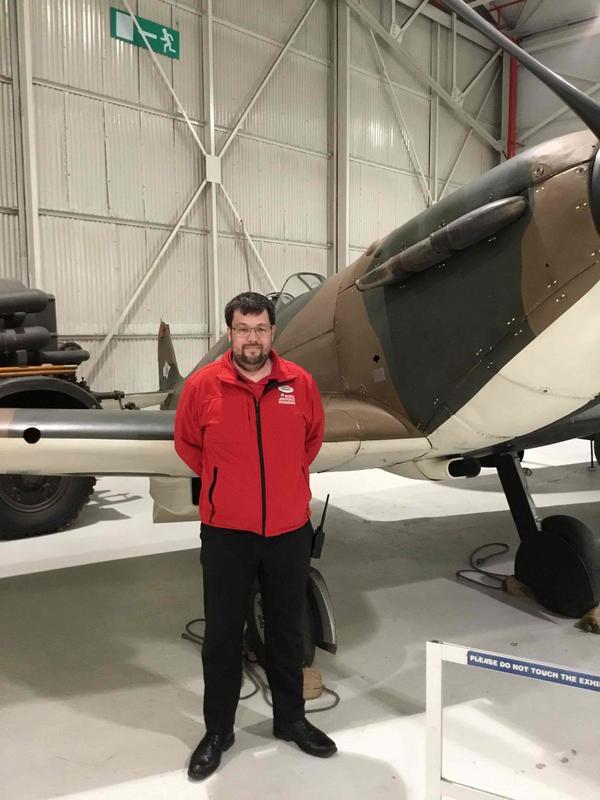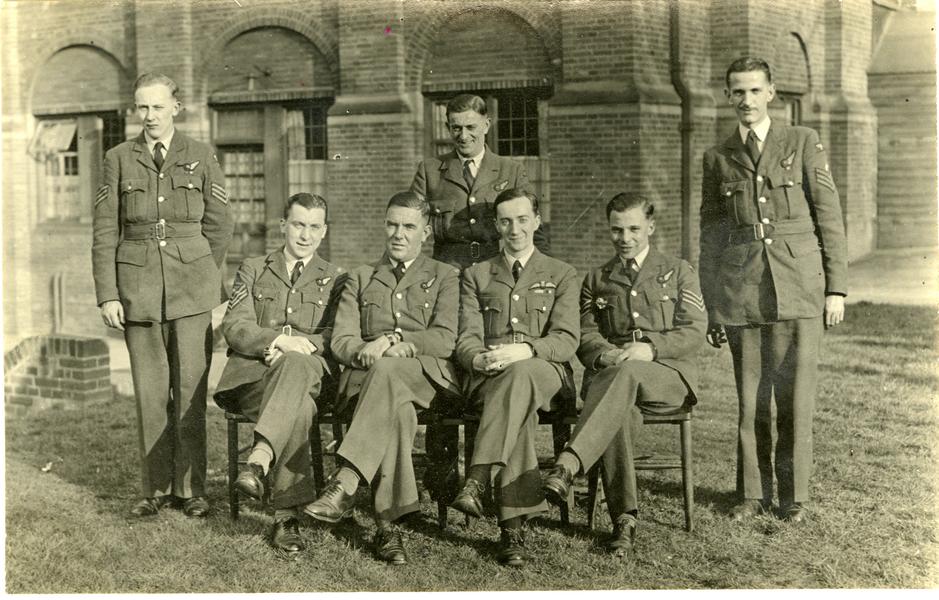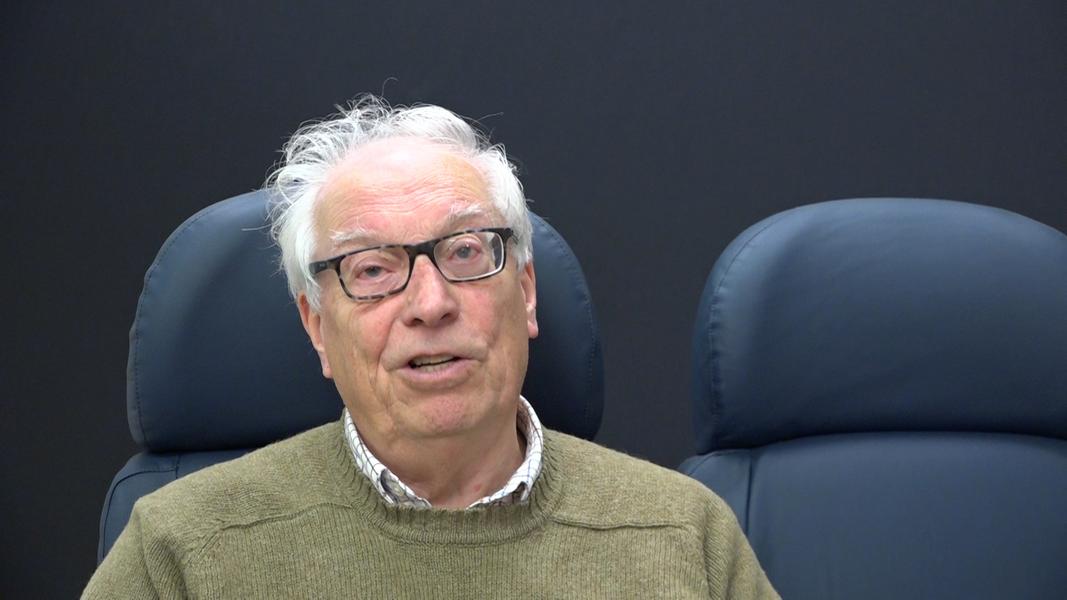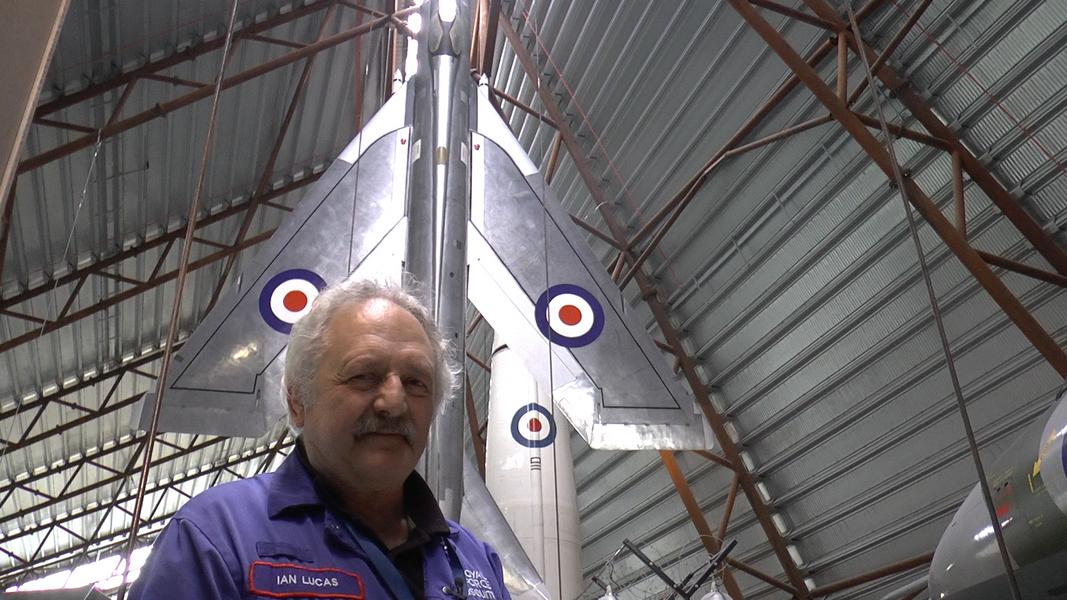and it's a long flight.
And we were approaching the English Channel.
We'd been airborne for about nine hours
and my flight engineer with his great sense of humor,
he said, "Skipper, I don't want to worry you
"but we've only got about 10 minutes fuel left."
(laughing)
So, now there was a procedure
in those war years.
Every control tower had a frequency set aside
for aircraft that had a problem.
So, my wireless operator tuned into that frequency
so I was able to transmit.
The procedure was you called Darkie.
So, you pressed the transmitter and said, "Darkie,
"Darkie, Darkie."
And back came the response, "Hello Darkie. (coughs)
"This is Westmorland.
"How can we help?"
So, I said, "Well, you can help
"because I've got about 10 minutes fuel
"and we need to land."
So, they came back and said, "Right.
"We've switched the glim lights on."
It was a fighter command.
They didn't have a tarmac runway.
It was steel mesh on the grass.
It had glim lights so, they switched on the glim lights
and we could see them down there.
So, we came in to land and I appreciated
that I either got it right the first time or that was it
cause we didn't have enough fuel to go round again.
So, the technique is you approach the end
of the landing area
with your speed
just above stalling point.
The Halifax would stall out at about 100 miles an hour
so you approached at 110 so it had to be exact.
So, we did that and as you come over the threshold
of the landing strip, pull back the throttles
and it would stall.
And I got it right the first time.
(laughing)
